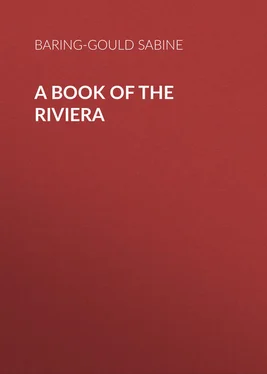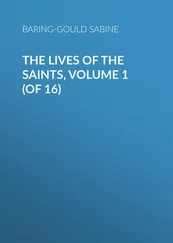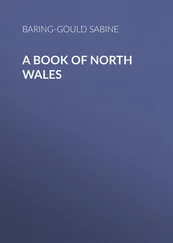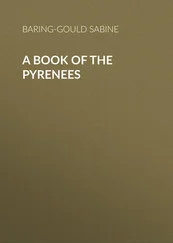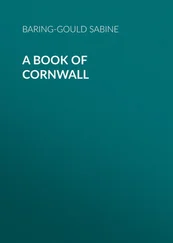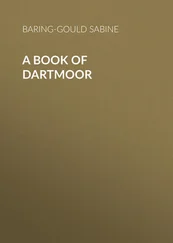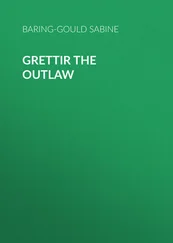Sabine Baring-Gould - A Book of The Riviera
Здесь есть возможность читать онлайн «Sabine Baring-Gould - A Book of The Riviera» — ознакомительный отрывок электронной книги совершенно бесплатно, а после прочтения отрывка купить полную версию. В некоторых случаях можно слушать аудио, скачать через торрент в формате fb2 и присутствует краткое содержание. Жанр: foreign_antique, foreign_prose, на английском языке. Описание произведения, (предисловие) а так же отзывы посетителей доступны на портале библиотеки ЛибКат.
- Название:A Book of The Riviera
- Автор:
- Жанр:
- Год:неизвестен
- ISBN:нет данных
- Рейтинг книги:5 / 5. Голосов: 1
-
Избранное:Добавить в избранное
- Отзывы:
-
Ваша оценка:
- 100
- 1
- 2
- 3
- 4
- 5
A Book of The Riviera: краткое содержание, описание и аннотация
Предлагаем к чтению аннотацию, описание, краткое содержание или предисловие (зависит от того, что написал сам автор книги «A Book of The Riviera»). Если вы не нашли необходимую информацию о книге — напишите в комментариях, мы постараемся отыскать её.
A Book of The Riviera — читать онлайн ознакомительный отрывок
Ниже представлен текст книги, разбитый по страницам. Система сохранения места последней прочитанной страницы, позволяет с удобством читать онлайн бесплатно книгу «A Book of The Riviera», без необходимости каждый раз заново искать на чём Вы остановились. Поставьте закладку, и сможете в любой момент перейти на страницу, на которой закончили чтение.
Интервал:
Закладка:
S. Baring-Gould
A Book of The Riviera
“ON OLD HYEMS’ CHIN, AND ICY CROWN, AN ODOROUS CHAPLET OF SWEET SUMMER BUDS IS SET.”
Midsummer Night’s Dream , ii. 2.PREFACE
THIS little book has for its object to interest the many winter visitors to the Ligurian coast in the places that they see.
A consecutive history of Provence and Genoese Liguria was out of the question; it would be long and tedious. I have taken a few of the most prominent incidents in the history of the coast, and have given short biographies of interesting personages connected with it. The English visitor calls the entire coast – from Marseilles to Genoa – the Riviera; but the French distinguish their portion as the Côte d’Azur, and the Italians distinguish theirs as the Riviera di Ponente. I have not included the whole of this latter, so as not to make the book too bulky, but have stayed my pen at Savona.
CHAPTER I
PROVENCE
WHEN a gambler has become bankrupt at the tables of Monte Carlo, the Company that owns these tables furnish him with a railway ticket that will take him home, or to any distance he likes, the further the better, that he may hang or shoot himself anywhere else save in the gardens of the Casino. On much the same principle, at the beginning of last century, the physicians of England recommended their consumptive patients to go to Montpellier, where they might die out of sight, and not bring discredit on their doctors. As Murray well puts it: —
“It is difficult to understand how it came to be chosen by the physicians of the North as a retreat for consumptive patients, since nothing can be more trying to weak lungs than its variable climate, its blazing sunshine alternating with the piercingly cold blasts of the mistral . Though its sky be clear, its atmosphere is filled with dust, which must be hurtful to the lungs.”
The discovery of a better place, with equable temperature, and protection from the winds, was due to an accident.
In 1831, Lord Brougham, flying from the fogs and cold of England in winter, was on his way to Italy, the classic land of sunshine, when he was delayed on the French coast of the Mediterranean by the fussiness of the Sardinian police, which would not suffer him to pass the frontier without undergoing quarantine, lest he should be the means of introducing cholera into Piedmont. As he was obliged to remain for a considerable time on the coast, he spent it in rambling along the Gulf of Napoule. This was to him a veritable revelation. He found the sunshine, the climate, the flowers he was seeking at Naples where he then was, at Napoule. He went no farther; he bought an estate at Cannes, and there built for himself a winter residence. He talked about his discovery. It was written about in the papers. Eventually it was heard of by the physicians, and they ceased to recommend their patients to go to Montpellier, but rather to try Cannes. When Lord Brougham settled there, it was but a fishing village; in thirty years it was transformed; and from Cannes stretches a veritable rosary of winter resorts to Hyères on one side to Alassio on the other; as white grains threaded on the line from Marseilles to Genoa. As this chain of villas, hotels, casinos, and shops has sprung up so recently, the whole looks extremely modern, and devoid of historic interest. That it is not so, I hope to show. This modern fringe is but a fringe on an ancient garment; but a superficial sprinkling over beds of remote antiquity rich in story.
Sometimes it is but a glimpse we get – as at Antibes, where a monument was dug up dedicated to the manes of a little “boy from the North, aged twelve years, who danced and pleased” in the theatre. The name of the poor lad is not given; but what a picture does it present! Possibly, of a British child-slave sent to caper, with sore heart, before the Roman nobles and ladies – and who pined and died. But often we have more than a hint. The altar piece of the Burning Bush at Aix gives up an authentic portrait of easy-going King Réné, the luckless wearer of many crowns, and the possessor of not a single kingdom – Réné, the father of the still more luckless Margaret, wife of our Henry VI.
Among the Montagnes des Maures, on a height are the cisterns and foundations of the stronghold of the Saracens, their last stronghold on this side of the Pyrenees, whence they swept the country, burning and slaying, till dislodged in 972 by William, Count of Provence. Again, the house at Draguignan of Queen Joanna, recalls her tragic story; the wife of four husbands, the murderess of the first, she for whose delectation Boccaccio collected his merry, immoral tales; she, who sold Avignon to the Popes, and so brought about their migration from Rome, the Babylonish captivity of near a hundred years; she – strangled finally whilst at her prayers.
The Estérel, now clothed in forest, reminds us of how Charles V. advancing through Provence to claim it as his own, hampered by peasants in this group of mountains, set the forests on fire, and for weeks converted the district into one great sea of flame around the blood-red rocks.
Marseilles recalls the horrors of the Revolution, and the roar of that song, smelling of blood, to which it gave its name. At Toulon, Napoleon first drew attention to his military abilities; at S. Raphael he landed on his return from Egypt, on his way to Paris, to the 18th Brumaire, to the Consulate, to the Empire; and here also he embarked for Elba after the battle of Leipzig.
But leaving history, let us look at what Nature affords of interest. Geologically that coast is a great picture book of successions of deposits and of convulsions. There are to be found recent conglomerates, chalk, limestone, porphyry, new red sandstone, mica schist, granite. The Estérel porphyry is red as if on fire, seen in the evening sun. The mica schist of the Montagnes des Maures strews about its dust, so shining, so golden, that in 1792 a representative of the Department went up to Paris with a handful, to exhibit to the Convention as a token of the ineptitude of the Administration of Var, that trampled under foot treasures sufficient to defray the cost of a war against all the kings of the earth.
The masses of limestone are cleft with clus , gorges through which the rivers thunder, and foux springs of living water bursting out of the bowels of the mountains.
Consider what the variety of geologic formation implies: an almost infinite variety of plants; moreover, owing to the difference of altitudes, the flora reaches in a chromatic scale from the fringe of the Alpine snows to the burning sands by the seas. In one little commune, it is estimated that there are more varieties to be found than in the whole of Ireland.
But the visitor to the seaboard – the French Côte d’azur and the Italian Riviera – returns home after a winter sojourn there with his mind stored with pictures of palms, lemons, oranges, agaves, aloes, umbrella pines, eucalyptus, mimosa, carob-trees, and olives. This is the vegetation that characterises the Riviera, that distinguishes it from vegetation elsewhere; but, although these trees and shrubs abound, and do form a dominant feature in the scenery, yet every one of them is a foreign importation, and the indigenous plants must be sought in mountain districts, away from towns, and high-roads, and railways.
Читать дальшеИнтервал:
Закладка:
Похожие книги на «A Book of The Riviera»
Представляем Вашему вниманию похожие книги на «A Book of The Riviera» списком для выбора. Мы отобрали схожую по названию и смыслу литературу в надежде предоставить читателям больше вариантов отыскать новые, интересные, ещё непрочитанные произведения.
Обсуждение, отзывы о книге «A Book of The Riviera» и просто собственные мнения читателей. Оставьте ваши комментарии, напишите, что Вы думаете о произведении, его смысле или главных героях. Укажите что конкретно понравилось, а что нет, и почему Вы так считаете.
